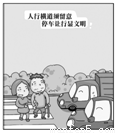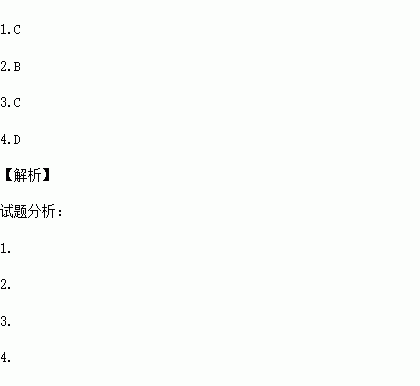题目内容
阅读理解。
It is quite reasonable to blame traffic jams, the cost of gas and the great speed of modern life, but manners on the road are becoming horrible. Everybody knows that the nicest men would become fierce tigers behind the wheel. It is all right to have a tiger in a cage, but to have one in the driver's seat is another matter.

Road politeness is not only good manners, but a good sense. It takes the most cool?headed drivers great patience to give up the desire to beat back when forced to face rude driving. On the other hand, a little politeness goes a long way towards reducing the possibility of quarrelling and fighting. A friendly nod or a wave of thanks in answer to an act of politeness helps to create an atmosphere of good will and becomes so necessary in modern traffic conditions. But such behavior of politeness is by no means enough. Many drivers nowadays don't even seem able to recognize politeness when they see it.
However, misplaced politeness can also be dangerous. A typical example is the driver who waves a child crossing the street at a wrong place into the path of oncoming cars that may not be able to stop in time. The same goes for encouraging old ladies to cross the road wherever and whenever they want to.
An experienced driver, whose manners are faultless, told me it would help if drivers learnt to correctly join in a traffic stream without causing total blockages that give rise to unpleasant feelings. Unfortunately, modern drivers can't even learn to drive, let alone master the roadmanship (公路驾车技能). Years ago, experts warned us that the fast increase of the car ownership would demand more give?and?take (互谅互让) from all road users. It is high time for all of us to take this message to heart.
1.The passage mainly talks about ________.
A.traffic jams B.good manners
C.road politeness D.modern drivers
2.Troubles on the road are often caused by ________.
A.traffic jams
B.the behavior of the drivers
C.the great speed of modern life
D.terrible road conditions
3.According to the writer, a good driver should ________.
A.encourage children to cross the road whenever they want to
B.beat back when forced to face rude driving
C.be able to recognize politeness when he sees it
D.join in a traffic stream quickly however other people feel
4.It is not always right for drivers to ________.
A.master the roadmanship
B.neglect politeness when they see it
C.give a friendly nod in answer to an act of politeness
D.encourage old ladies to cross the road whenever and wherever they want to
 名校课堂系列答案
名校课堂系列答案
